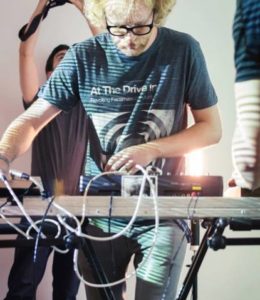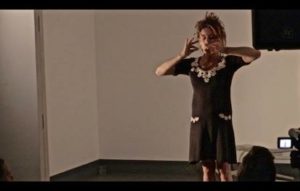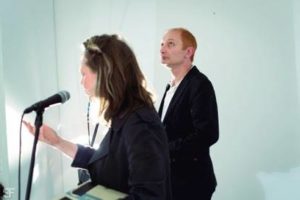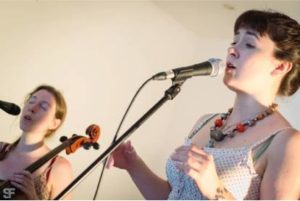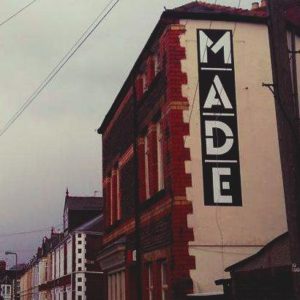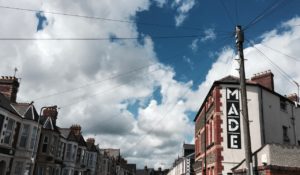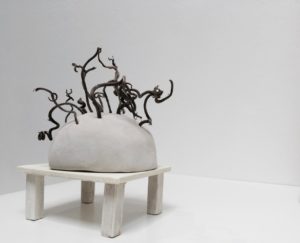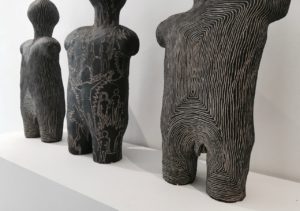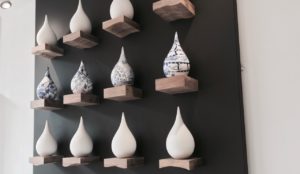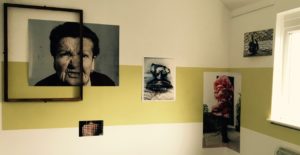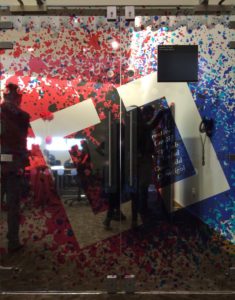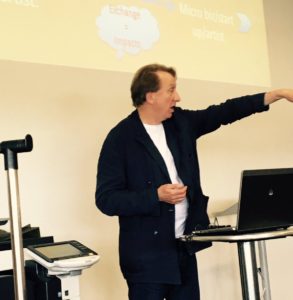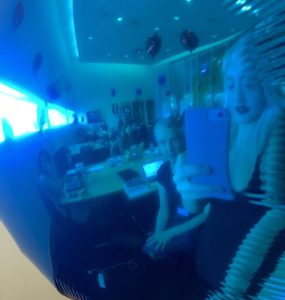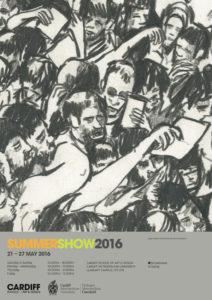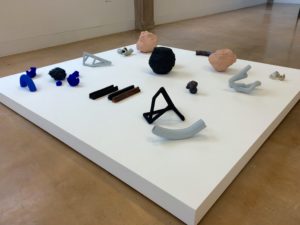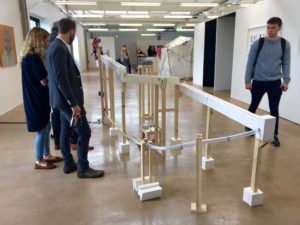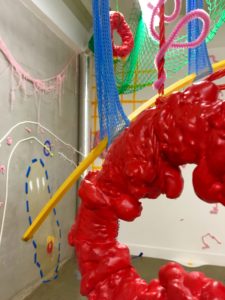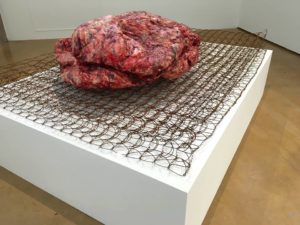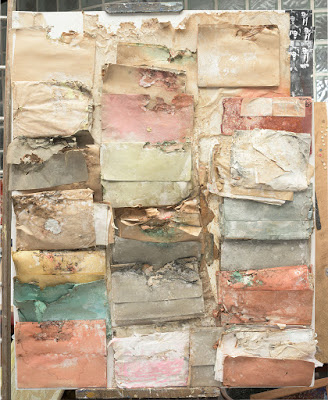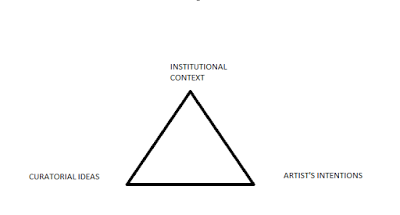Origami Reinkarnasjon performed by Simon Gore and Jack Rees
Traditional Sephardic lullabies, liberated CCTV Footage and choreography merging Jane Eyre with the tunes of PJ Harvey are among the diverse acts at Clear-Cut 6 programme of experimental performance arts.
The audience clamours for position in the gallery space at M.A.D.E; spectators gather at the back and the edges of the room, whilst others nestle amongst the many cushions and pallet boxes laid out for our comfort. The atmosphere is one of anticipation, but also of fun and togetherness. After reading through the programme at the beginning of the evening, I find myself curious about each of the seven experimental acts in turn. Clear-Cut is an event unlike anything I have attended before, and the diversity of the audience and acts alike is immediately apparent. The evening is a showcase of video works, dance, spoken word, performance, visual arts, new music and more. To experience this diversity of performance in a single event is impressive. It’s something of a one-stop culture stop.
“Where genres collaborate and collide”, Clear-Cut 6.
Will Salter, host of the evening and Dada performer
Will Salter is our animated host; himself performing Dada poetry at intervals throughout the evening to great effect. His verbal explosions punctuate the spaces between acts, and mischievously disrupt the audience should they grow too comfortable. Dada retains a long history with experimental performance related to (or in denial of) the fine arts, which makes the presence of the genre particularly appropriate on this occasion.
Our agenda for the evening is jam-packed, prompting fears that we might not achieve all seven acts. In actuality, the evening is well-structured whilst maintaining a casual and friendly atmosphere.
Marega Palser merges literature, illustration and popular music in, ‘Jane Eyre, The DarkSide...’ Initially inspired by Paula Rego’s illustrations of the novel by Charlotte Bronte, Palser’s performance really is a highlight of the evening. The artist said of the inspiration for the work, “each picture told a story; mysterious often to my undeveloped understanding and imperfect feelings, yet ever profoundly interesting…” Palser describes the piece as, “a thought in progress…” and the work curiously encompasses elements of the unknown. The piece reveals something of an internal conflict, which ultimately dictates movement, yet there is undeniably confidence in the madness.
‘Jane Eyre, The DarkSide…’ performed by Marega Palser
‘IdentiTTy’ by Arnaldo James and collaborators is a film which asks more questions than are answered. “Does ethnicity or origin come through when skin tone is homogenised? Is morphology reflected by environment? Can identity be conveyed through dance and abstract non-verbal storytelling?“ The potentially fluid and reactionary nature of cultural identity is explored in this choreographed video work. Referencing Japanese Butoh and Creole traditions alongside more indigenous Trinidadian movement the piece claims to examine, “the similarities that occur in different cultures through movement and music”. The piece is visually stunning.
Nicholas Morgan & Margot Przymierska perform as the collective, ‘Parallel Lines’. In, ‘That’s the family you have’ Nicholas and Margot divulge separate yet intertwining stories, “improvising around box-set narratives and the immediate, subjective experiences of our own lives, collapsing characters, time & space, fiction & reality”. Their simultaneous telling of the circumstances surrounding the funeral of a relative, alongside an audio description of moments from the popular series ‘Game of Thrones’ captivated the Clear-Cut 6 audience and was at once sensitive and hilarious.
‘That’s the family you have’ performed by ‘Parallel Lines’, Nicholas Morgan & Margot Przymierska
Meanwhile, above the performance space, the gallery plays host to a film and sculpture installation by contemporary artist, Merran Singh Dubb. ‘Temple of Consciousness’ explores the relationship between the declining condition of the natural environment and the similarly marred spiritual condition of humankind. “It is evident that we are destroying the planet but ultimately, we are destroying ourselves”. The installation thoughtfully presents imagery representing spirituality alongside the elemental extremes of natural disaster and climate change.
To close the event, ‘Trio Ladino‘, consisting of Angie Kirby, Bethan Frieze and Eloise Gynn are a trio of musicians and vocalists performing adaptations of Arabic and Sephardic traditional lullabies. The trio describe their sound as, “ancient melodies fused with more contemporary musical perspectives, anchored by lullaby-like themes and romantic narratives”. The performance is a calming and captivating conclusion to the Clear-Cut programme.
On reflection, improvisation and experimentation were certainly the order of the evening with every act proving both valuable and unique. The atmosphere was at the same time informal, friendly, supportive and progressive. Clear-cut is unlike anything I have seen and I will be attending from here on!
‘Trio Ladino’ performers Angie Kirby, Bethan Frieze and Eloise Gynn
For a taste of Clear-Cut, visit: https://www.youtube.com/watch?v=JeQJ4MaIVtU
https://www.facebook.com/CardiffMADE/
Image credits to Glyn Owens and Sarah Vaughan-Jones.
Special thanks to M.A.D.E Gallery, Sarah Vaughan-Jones and all contributors and performers for the organisation of this event.

